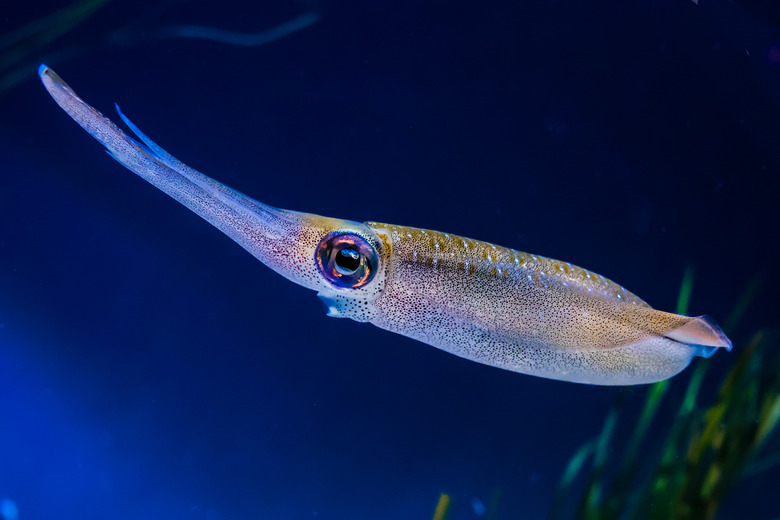How To Determine Whether A Squid Is Male Or Female?
A squid is cigar-shaped mollusk (like clams and oysters) without an external shell. The most intelligent of the cephalopod family, which includes the octopus, nautilus, and cuttlefish, the squid has a large brain, eight arms and two tentacles, an ink sac, a water jet, two enormous and complex eyes and three hearts. There are more than 300 varieties of squid, from the tiny 1-inch shallow water squid to the 60-foot-deep, sea-dwelling giant squid. Determining the gender of a squid can be challenging, but there are several physical and behavioral clues you can gather.
Step 1
Note the developmental stage of the squid. When squid are juveniles or young adults, there is no way to tell whether they are male or female. As they age, the squid's anatomy changes to include male and female external and internal characteristics.
Step 2
Check the size and shape of the squid. Although the physiological sex characteristics of the squid are completely internal, males are larger and more heavy bodied than females.
Step 3
Watch squid behavior during mating season. Near dawn, a large group of male squid gather to swim in a circle over the mating ground. The female squid watches this display of mating readiness and eventually joins her chosen male in this elliptical swim. This behavior continues all day, broken into episodes in which male and female squid pair off, drop to the sea floor and mate, not necessarily with the same partner each time.
Step 4
Observe squid mating and laying eggs. The male squid uses either a customized arm or a penis to deliver sperm to the female squid. In either case, the sperm is encased in a packet called a spermitangia, which is thrust into or deposited on the receptive female. Some male squid swim languidly around to attract a female, while others, called "sneaker" males, dart in and deposit their sperm packets and dash away after only six seconds. The larger males usually escort a female to an appropriate area while she attaches her fertilized "egg finger (containing about 100 eggs)" to the breeding grounds.
Step 5
Dissect a squid. Squid are favorite organisms for school biology lab lessons because they have unique anatomical structures interesting to students. Once the mantle (body) is slit open, you will be able to tell whether your squid is male or female. Females have nidamental glands that are white or translucent when they are young adults and yellow-brown-to-orange oviducts and ovaries when adults. Male squid have a spermatophoric complex that fills with spermatophores as the squid becomes an adult.
TL;DR (Too Long; Didn't Read)
If you dissect a squid, carefully remove its pen (internal stiffening structure) and ink sac. Write on a piece of paper by dipping the pen into the ink and drawing.
Cite This Article
MLA
Gutierrez, D.M.. "How To Determine Whether A Squid Is Male Or Female?" sciencing.com, https://www.sciencing.com/determine-whether-squid-male-female-5831196/. 13 March 2018.
APA
Gutierrez, D.M.. (2018, March 13). How To Determine Whether A Squid Is Male Or Female?. sciencing.com. Retrieved from https://www.sciencing.com/determine-whether-squid-male-female-5831196/
Chicago
Gutierrez, D.M.. How To Determine Whether A Squid Is Male Or Female? last modified March 24, 2022. https://www.sciencing.com/determine-whether-squid-male-female-5831196/
